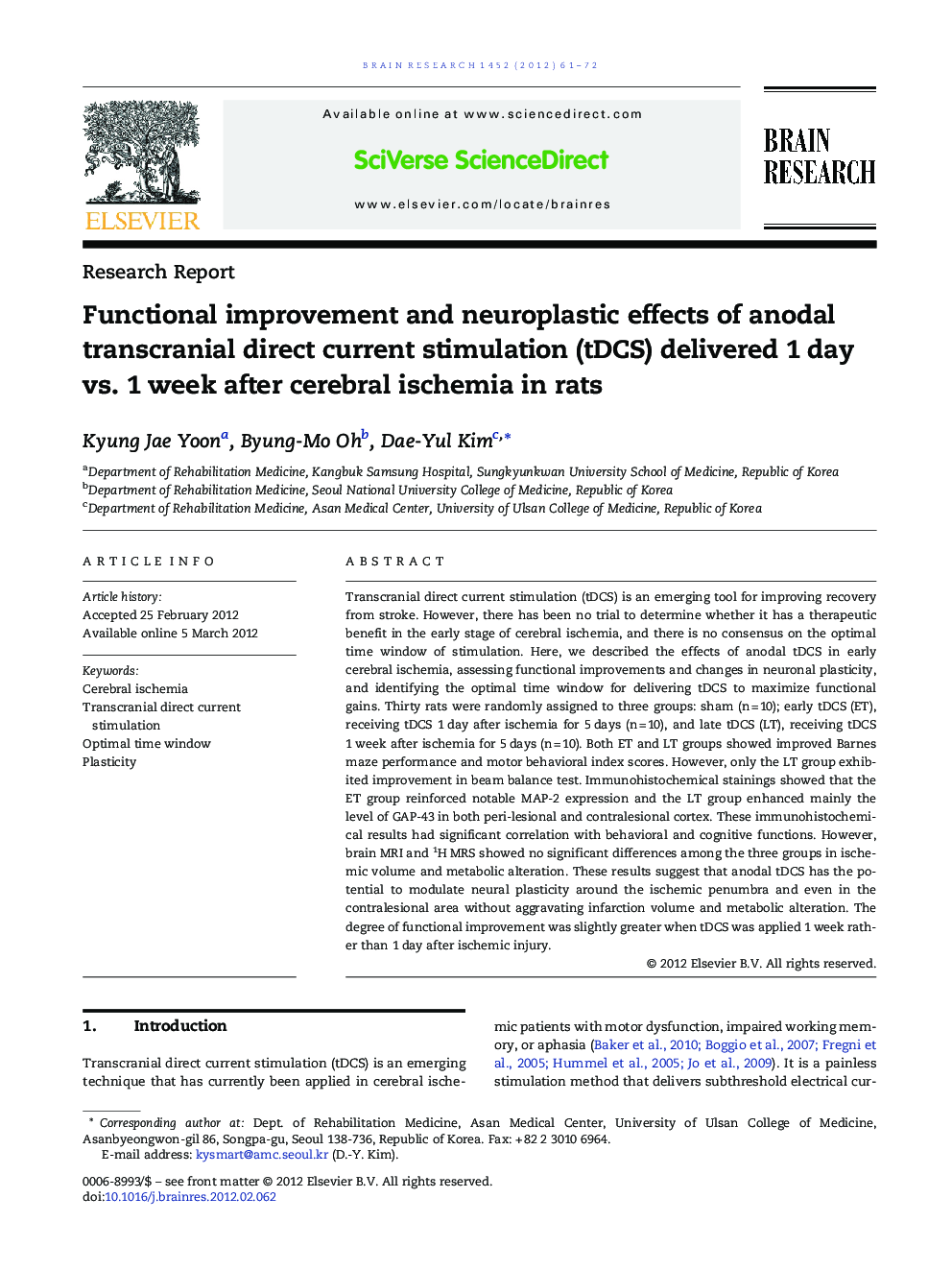| Article ID | Journal | Published Year | Pages | File Type |
|---|---|---|---|---|
| 6264381 | Brain Research | 2012 | 12 Pages |
Transcranial direct current stimulation (tDCS) is an emerging tool for improving recovery from stroke. However, there has been no trial to determine whether it has a therapeutic benefit in the early stage of cerebral ischemia, and there is no consensus on the optimal time window of stimulation. Here, we described the effects of anodal tDCS in early cerebral ischemia, assessing functional improvements and changes in neuronal plasticity, and identifying the optimal time window for delivering tDCS to maximize functional gains. Thirty rats were randomly assigned to three groups: sham (n = 10); early tDCS (ET), receiving tDCS 1 day after ischemia for 5 days (n = 10), and late tDCS (LT), receiving tDCS 1 week after ischemia for 5 days (n = 10). Both ET and LT groups showed improved Barnes maze performance and motor behavioral index scores. However, only the LT group exhibited improvement in beam balance test. Immunohistochemical stainings showed that the ET group reinforced notable MAP-2 expression and the LT group enhanced mainly the level of GAP-43 in both peri-lesional and contralesional cortex. These immunohistochemical results had significant correlation with behavioral and cognitive functions. However, brain MRI and 1H MRS showed no significant differences among the three groups in ischemic volume and metabolic alteration. These results suggest that anodal tDCS has the potential to modulate neural plasticity around the ischemic penumbra and even in the contralesional area without aggravating infarction volume and metabolic alteration. The degree of functional improvement was slightly greater when tDCS was applied 1 week rather than 1 day after ischemic injury.
► Anodal tDCS had benefits in acute cerebral ischemic rats. ► tDCS at 1 week (LT) was slightly more effective than 1 day after ischemia (ET). ► MAP-2 was increased around the peri-lesional area in ET group. ► GAP-43 was increased in the intact cortex of LT group. ► MRI and 1H MRS showed no differences among groups in ischemic volume and metabolites.
